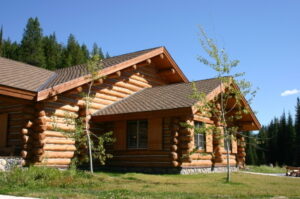SEO is a critical part of any digital marketing strategy, which is why marketers allocate 41% of their budget to it.
Webpages and articles are what search engines like Google index and then analyze when people perform queries. Providing valuable information to the public will make a page more likely to be considered relevant to a query. Contact Crescent City Marketing now!

Keywords are the building blocks of a search engine optimization strategy. Effective use of keywords is essential, whether you’re creating new thought leadership content or revitalizing existing academic program pages. Identifying and targeting relevant keywords can help you drive more traffic to your site, attract prospective students, and improve your organic ranking.
When choosing the right keywords, consider search intent. There are four basic types of search intent: informational, navigational, commercial, and transactional. These categories are based on the intention of the searcher: Are they looking for general information, evaluating options, or ready to buy? Getting the match right will compel the audience to engage with your content.
While singular keywords may have high search volume, they often come with stiff competition from well-established websites and brands. As a result, it’s usually difficult to rank highly for these terms. Instead, focus on long-tail keywords, which are more specific and tend to have a lower competition level.
Using tools like Ubersuggest can help you discover long-tail keywords that are relevant to your content. These longer phrases are searched less frequently than singular keywords, but they have a higher conversion potential and can bring targeted traffic to your website. Also, try to avoid keyword stuffing by repeating the same keyword multiple times. This can be frustrating for users and violates Google’s spam policies.
Another important factor to consider is the average monthly search volume of each keyword. A high search volume means that there are more people searching for the term, so it’s more competitive. However, this doesn’t necessarily mean that the term will perform better in the long run.
Using a search-listening tool can help you find new keyword opportunities and uncover hidden insights about your competitors. These tools can identify emerging trends, frequently asked questions, larger discussions, synonymous queries, and more. You can then use these keywords in your on-page SEO to capture more organic traffic.
On-page optimization
On-page optimization is the process of optimizing individual website pages to improve their visibility in search engine results pages (SERPs). It involves a combination of factors, including keyword research, content optimization, and link building. Getting these elements right can help you increase your ranking and improve your business’s organic online traffic.
On-site SEO is a critical part of any online marketing strategy, but it can be difficult to understand. Thankfully, there are several tools available that can streamline the on-page SEO process and provide valuable insights into your campaign.
For example, one of the most important on-page optimization techniques is to optimize the page title. This is a text tag that appears in the search engine result pages (SERPs) and encourages people to click on the page. To optimize the title, you should include your target keywords and make sure that it is concise and compelling. Additionally, you should optimize image alt tags so that Google can read them. These tags provide a short descriptive blurb for your images and can be useful if they fail to load or if someone uses a screen reader.
Another on-page optimization technique is to use structured data markup. Structured data is a way of marking up your site’s source code to make it easier for search engines to understand different elements of your content. It is also what allows for features like knowledge panels and featured snippets in Google search results.
Lastly, it is crucial to optimize your URLs. A clean and readable URL tells Google that the content on the page is relevant to the user’s search intent. It also helps search engines identify the page’s hierarchy and determine whether it is the best match for the query.
On-page optimization is essential for improving your organic SERP rankings, but it can be time-consuming to execute. To speed up the process, you can use an on-page SEO checker tool to analyze your web pages and give you suggestions for improvements. It’s also important to remember that on-page optimization is not a one-time activity; it must be a continuous effort.
Off-page optimization
Off-page optimization is a critical part of SEO. It includes activities that take place outside your website, such as link building, social media marketing, and brand mentions. These activities help boost your website’s search engine ranking by increasing its authority and trustworthiness. They also generate organic traffic, which is a must for growing your business.
SEO experts recommend combining off-page and on-page strategies to achieve the best results. However, these tactics work differently and have different goals. While on-page optimization involves tweaking your web copy and source code, off-page optimization focuses on gaining quality backlinks and establishing your brand reputation. Off-page SEO techniques require more time to produce results, but they are a powerful way to improve your search engine ranking.
In addition to building links and boosting your domain authority, off-page optimization also includes generating positive reviews and comments. It’s important to respond to customer feedback and mentions on third-party review sites such as Yelp, as these factors can have a huge impact on your search engine rankings.
According to a 2015 Moz survey, off-page SEO tactics accounted for over 50% of Google’s search ranking factors. In fact, off-page tactics are so significant that it’s hard to imagine how you could rank highly in the search engines without them.
To increase your off-page SEO, it’s important to put out unique and interesting content. This will generate high-quality backlinks and get your content in front of new audiences. Another off-page SEO tactic is to write guest blogs on other websites. These articles will include a byline or in-text link to your website.
For local businesses, off-page SEO may also include offline marketing campaigns that drive online traffic and reviews. For example, a local restaurant can advertise on billboards to drive traffic and promote its online menu and reviews. Off-page SEO can even extend to in-store marketing, such as a loyalty program that rewards customers with online coupons and discounts.
Link building
The most important aspect of a seo strategy is link building. It involves constructing a network of links across your pages to demonstrate your authority in a given field to search engines. It’s also the way that web crawlers discover new content to index. In addition to creating a responsive website and improving page speed, link building is the best way to rank your site in search engine results. However, it’s important to understand that not all link building methods are created equal. Some of them are against Google’s guidelines and can cause your site to be penalized.
One of the most popular ways to build links is by writing guest posts. This strategy can be time-consuming, but it’s a great way to increase your visibility and improve your ranking in search engine results. However, it’s essential to remember that quality is more important than quantity. When creating a guest post, you should try to find high-quality sites that are relevant to your industry. Moreover, it’s important to write a compelling introduction that makes people want to click and read more.
Another way to build links is by creating valuable tools and resources for your audience. This can include everything from online calculators to helpful blog posts. To promote your content, you can use social media and email outreach. This strategy can be very effective, but it’s important to stay away from spammy tactics. For example, if you send an email to someone, don’t spam them by using the word “so” in every sentence.
If you’re looking for a quick and easy way to see the results of your SEO efforts, you can use a tool like Moz’s Link Explorer. This tool will show you a month-over-month comparison of your organic search traffic and total number of links. You can also filter by a specific keyword or subdomain to get more accurate data.
To create a link-worthy page, you must first come up with a topic that’s interesting and unique. You may need to survey your audience or conduct extensive research to come up with something truly impressive. Then, you need to promote the hell out of it. After all, nobody will link to a resource that they don’t know about.



